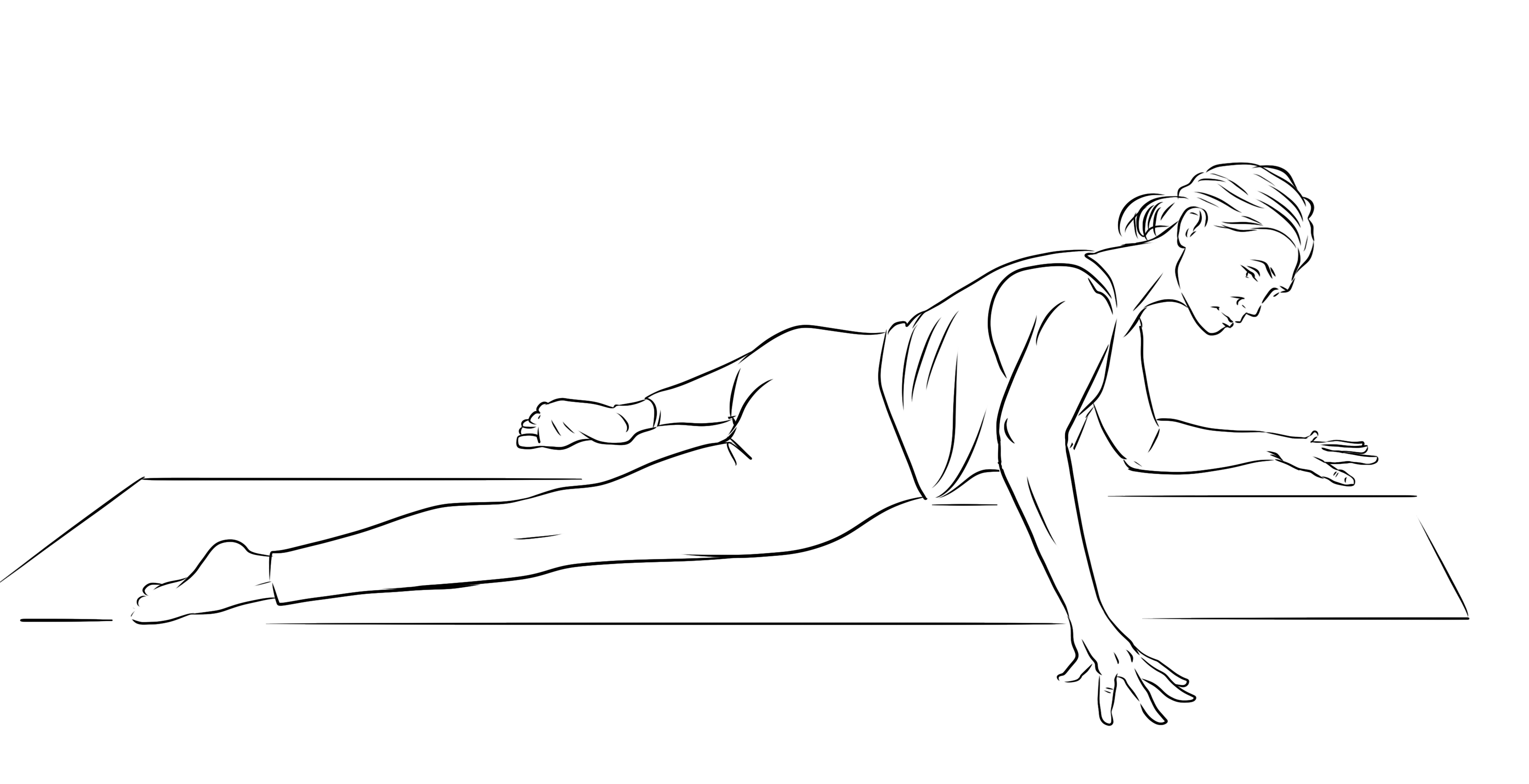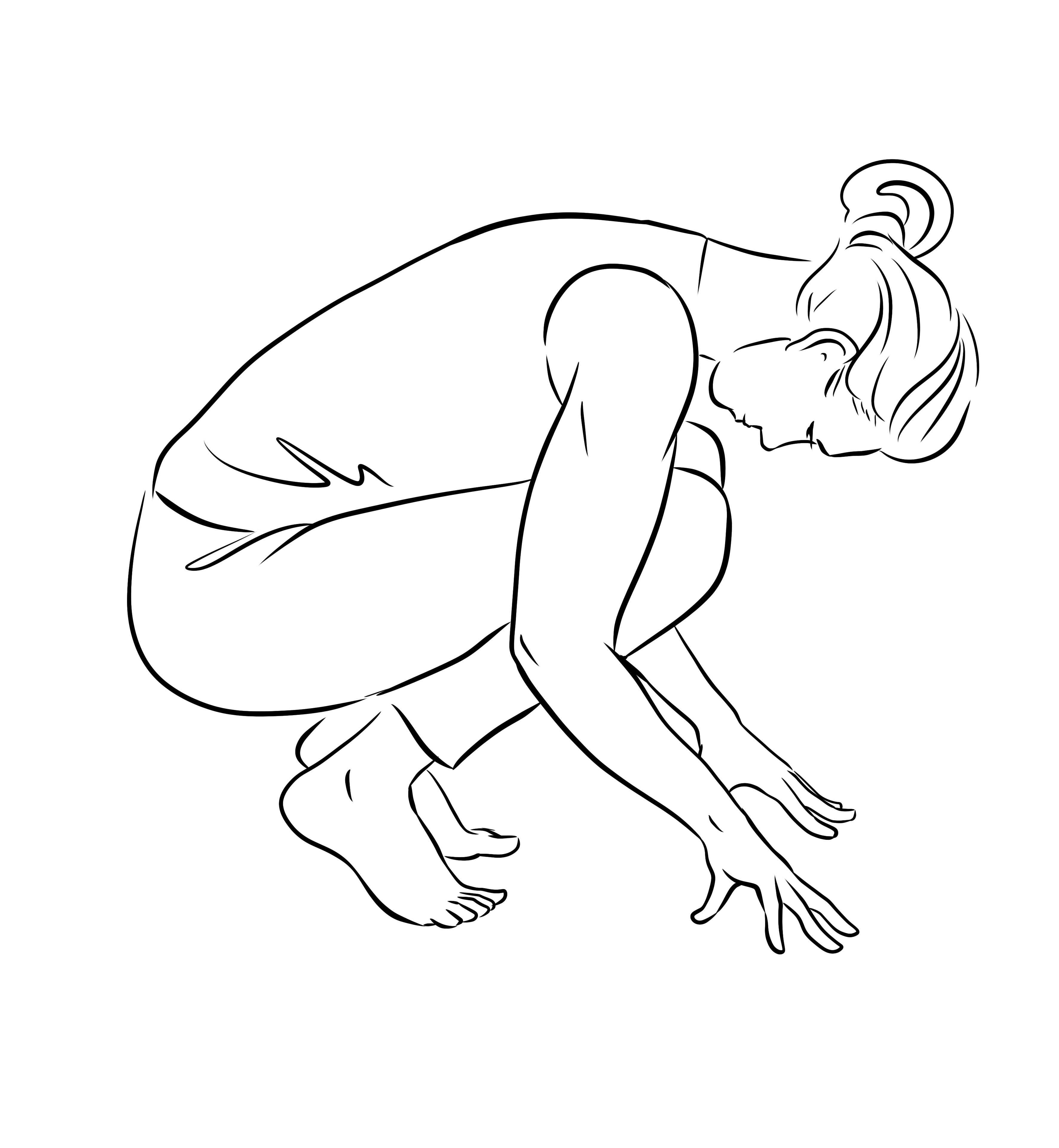How Stillness Within Yoga Can Help Us Find Calm
Mar 28, 2025
Tuning into the subtle
 Many people come to yoga seeking calm, and while some might think of it simply as a slower, more gentle practice (when judged as 'exercise'), there's a deeper connection that can be found by embracing stillness within all kinds of movement. This doesn’t always mean simply being static, or unmoving – when we consider that whilst we are alive and breathing, we are actually never still. Tuning into the less obvious and more subtle, inner movements can guide our often busy and externalised brain away from an attachment to 'doing more' and towards movement as expression, gesture and part of our emotional stories.
Many people come to yoga seeking calm, and while some might think of it simply as a slower, more gentle practice (when judged as 'exercise'), there's a deeper connection that can be found by embracing stillness within all kinds of movement. This doesn’t always mean simply being static, or unmoving – when we consider that whilst we are alive and breathing, we are actually never still. Tuning into the less obvious and more subtle, inner movements can guide our often busy and externalised brain away from an attachment to 'doing more' and towards movement as expression, gesture and part of our emotional stories.
Although the word yoga has become synonymous with the Modern Postural Yoga that now dominates the practice, the physical or postural side was only ever introduced as a way to support deeper, meditative states. The aim of yoga is to “still the fluctuations of the mind” (Yoga Sutras, Patanjali 1.2), any ‘techniques’ are simply the vehicles along the way. Much of the body relationship (embodiment) that are such a draw in modern practices is to meet the very mind and head driven way we live, and the value placed on thinking over feeling. While some students find that a more vigorous practice can temporarily quiet their agitation, to truly have a relationship with our calmer aspects, we need to learn to slow down and move away from striving (aparigraha) to feel nuance, tones and subtleties of our ever-shifting internal landscape. This can be quite the journey if we are attached to ‘doing’ and need time to lay down pathways of familiarity with more openness in time and space.
From there, experiencing the moving within stillness, and the stillness within movement is to meet the In dropping beneath the noise of daily life. By holding space in a posture or exploring the intensity of sensations when we slow things down or pause between movement, we allow ourselves to simply be, without judgment or expectation.
Coming back to whole
 A proficient yoga teacher will guide you to meet the full experience of physicality with the connection that is the union (yoga = to yoke) of mind-body that yoga can bring. There is a massive relief to the whole system when we don't have to expound heaps of energy towards staying scattered out in all directions. Modern life can be rather fracturing for the system, and to step back and allow things to gather back to whole is not always an easy process, but it can bring insight and room for self-compassion along the way.
A proficient yoga teacher will guide you to meet the full experience of physicality with the connection that is the union (yoga = to yoke) of mind-body that yoga can bring. There is a massive relief to the whole system when we don't have to expound heaps of energy towards staying scattered out in all directions. Modern life can be rather fracturing for the system, and to step back and allow things to gather back to whole is not always an easy process, but it can bring insight and room for self-compassion along the way.
Our minds are set for the vigilance that keeps us scatterd out in many directions. This a protective mechanism that serves us well in threatening scenarios and under stress, but as Rick Hanson, author of the book "Buddha's Brain" states, this can leave us with a humming brain constantly running along in the background.
I have heard many students say that when stress is high and they are plagued by the anxiety and agitation that this inner dialogue can produce, that a more vigorous, dynamic physical practice allows them to switch off their mind more. This makes sense, this type of intensity provides lots to do, deep sensations and constant change that distract the mind. It also involves high engagement of proprioception or how we move our bodies through space, with accuracy and grace which is embodying and known to switch off left-brain voices of analysis, evaluation and comparison.
There is no doubt that these effects occur and can give us a dedicated period of calm. Dynamic practice can also help our bodies process stress hormones and their profound knock-on effects. However to only move quickly and rattle through poses does not offer the chance to view the scenery. To move our practice to truly find calm off the mat because and it also because we're simply not used to being with silence and with ourselves.
Practices where we stay longer and hold a kind, silent space can provide a safe place to experience openness and let our system know how to notice and drop beneath constant brain chatter. This can be the more obvious restorative yoga and meditation, but also simply taking time to feel, open and unfold in postures. Yin yoga has become popular because it offers the chance to stay, deepen and learn to be with the intense sensations that arise, but we can also simply feel the pause and space between movement to let the experience be processed, integrated and assimilated.
 How we can stay calm
How we can stay calm
Personally I find a practice that combines all of these aspects the most informative for my whole mind-body, on and off the mat. When I’m overstimulated from working at a computer at home for example, I’m lucky enough to be able to step away and explore some movement to free up where tension may have accumulated. At this point, I’ll probably practice straight from standing to ground through the feet and unravel the postural curl-in of sitting. I tend to permeate this kind of working day with a few short practices, but they will always involve coming to still and simply being for much of the time – probably a third. As the physical yoga asana practice was incorporated into this meditation system, it is at its most beautiful as a route to drop beneath constant mind-hum. Spending time in our deepest, truest nature is the way to find deep, abiding calm – not because we’re looking for it (you can’t force relaxation) but because we’re allowing space for it and are then able to stay there when it happens.
How we can foster a relationship with calming states
 The essence of calm is slowing, kindness and quietening. Stress has the opposite speeding up, constricting and forceful effects. Whereas calm can seem to make time open up, stress seems to just gobble it up. Conversely though, when we are really present, time seems to go by strangely fast, but with a deep, expansive quality.
The essence of calm is slowing, kindness and quietening. Stress has the opposite speeding up, constricting and forceful effects. Whereas calm can seem to make time open up, stress seems to just gobble it up. Conversely though, when we are really present, time seems to go by strangely fast, but with a deep, expansive quality.
In daily life, the quality of the time we have depends on how much we’re really there. So often we are off somewhere else, musing and ruminating on the past or planning and projecting into the future. To be still, in the present and truly noticing it within the need to change, judge or comment is a skill that often gets buffeted away by the noise and velocity of other distractions.
Being still, quiet and even slow are qualities that are often less appreciated in our culture; ‘less is more’ is often a novel concept and there are tendencies to miss the more subtle and rich moments when we’re quickly rushing through to the next.
We drop into meditative alpha brainwaves (shown to reduce stress hormones) whenever we become truly absorbed in the moment – yoga for some, but also gardening, knitting, painting or golf for others – but also allowing ourselves to be ‘bored’ and exprience that resistance - that place from which potential creativity might emerge. This standing back to allow things to arise is often the barrier for those more used to a physically dynamic practice. Filling space is a rather engrained habit for we modern humans, and we can rush to do and have less familiarity with simply being. Shifting these patterns (samskaras) towards new, subtle layers with more time to explore the whole experience can create new neural pathways in the brain that can be called on to find calm in the face of daily stress.
 Letting go to make space for calm
Letting go to make space for calm
Noticing what we’re holding on to and what’s ready to leave is a flow that we can drop into through a mindfulness practice and the route to calm on and off the mat. It’s very human to want to hold on to thoughts and evaluations, as we can often believe that these make up who we are. Being open to change takes trust that our brain chatter isn’t ‘us’ – try writing down everything you think for 10 minutes and you’ll soon see that there’s an awful lot of noise! Letting go doesn’t mean losing ourselves, but it does mean releasing things we that no longer serve us and being open to more rewarding patterns.
This article was first published in Om Magazine.
For a short online course for yoga teachers who want to expand their awareness and skills, for themselves and their students – also an introduction for any wanting to attend Charlotte’s longer courses, click here for my Somatics & Embodied Awareness Programme.
You can also experience Somatic & Mindful Yoga classes with both Charlotte and Leonie at the online membership Whole Health - you can experience a month free with the code WH100 (add to the coupon box at checkout; you can cancel anytime).
Stay connected with news and updates!
Join our community to receive the latest news and updates from Somatic Therapeutic Yoga Training Limited. When you sign up, you'll also receive access to our Yoga Teacher Community and receive two ebook samples of my recent Yoga Teacher training books.
Don't worry, your information will not be shared.
We hate SPAM. We will never sell your information, for any reason.

